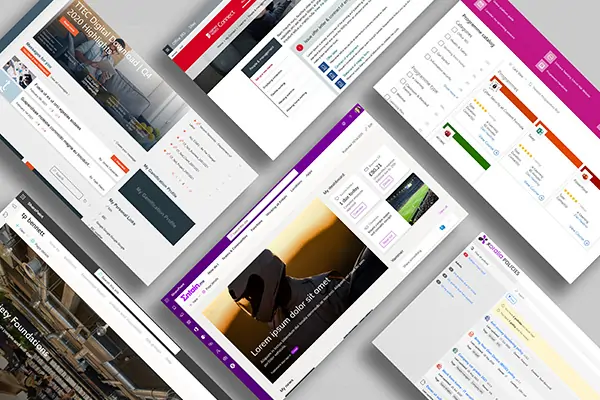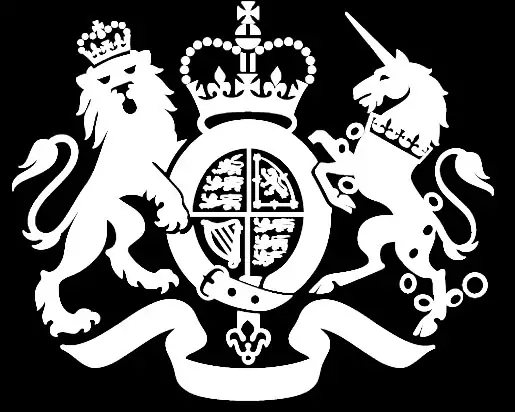Web parts are one of the core elements of SharePoint and therefore of any intranet built on SharePoint. They are the basic building blocks that make up the different sites within SharePoint; every page can be broken down into a series of different web parts. If you are creating an intranet based on SharePoint or even just contributing content to it, it really helps to have an understanding of what web parts are and the kind of web parts that you can deploy to deliver your overall content and experience.
In this article we’re going to take a deep dive into SharePoint web parts. We’re going to cover what they are, the different kinds of SharePoint web parts there are, what a custom web part is and the kind of value that custom web parts can bring to a SharePoint Internet.
What are webparts in SharePoint?
Web parts can be defined as the basic components of SharePoint. Microsoft themselves describe them as “the building blocks of your page” with the ability to “add text, images, files, video, dynamic content and more.”
Web parts are a significant part of the editing experience in SharePoint. Web parts can be arranged in different ways on a page. Content editors in SharePoint modern can also add new web parts, selecting from a number of web parts that come as standard with the platform.
Web parts can display SharePoint content but can also integrate feeds from other Microsoft 365 tools including Viva Engage / Yammer and Viva Connections. Each web part also has extensive configuration options around elements such as what to display or link to, how items are sorted or filtered, and how they are displayed. The combination of the sheer number of web parts and configuration options is one of the factors which enables SharePoint to be a highly flexible tool that can be used across multiple use cases.

What kind of SharePoint web parts are there?
There are currently around fifty SharePoint web parts that are available out of the box. These include everything from the ability to format calls to action or featuring a Power BI report to embedding a video or even a world clock. There isn’t enough space here to go into all the web parts that are available, but some of the most popular include:
- Connectors: provides options to bring in different feeds from external services based on the connectors available.
- Document library: displays a SharePoint document library.
- Events: displays upcoming events with the ability to click through for more information for each event.
- File viewer: the ability to embed a file such as a Word or PDF document to read within a page.
- Hero: displays up to five items at the top of a page, usually on a home or landing page.
- Highlighted content: a flexible web part that displays a dynamically generated list of content based on its type such as documents, videos or images, and other salient criteria.
- List: displays a SharePoint list, again another very flexible way to display and manage information.
- Microsoft Forms: embeds a Microsoft Form, and can be used for forms, polls and surveys.
- News: displays news items with different formatting options.
- People: displays details of a selected group of people, such as a team or key contacts, with links to individual profiles.
- Quick links: the ability to display quick links to other pages, apps, external sites and more.
- Yammer (Viva Engage): embed a personalised Viva Engage / Yammer feed on a page, for example to support a community.

Standard SharePoint web parts and gaps in functionality
Despite the high number of web parts and the ability to configure them, in practice there are still some gaps in functionality and features that can be particularly frustrating for intranet teams and internal communicators who want to deploy a high value SharePoint intranet or site with strong adoption.
Sometimes these “gaps” relate to branding and design options around the look and feel of a web part being limited or not quite right. At other times, it might be that there simply isn’t a web part available out of the box that delivers particular functionality. For example, a popular intranet feature that is not available in SharePoint out of the box is the ability for users to add their own personal links to frequently used apps that can then be displayed on an intranet home page.
Sometimes there also might be no web part available that delivers content from a different external system or application, where there might need to be an integration, and there is no current connector.
What are custom SharePoint web parts?
When there is gap in functionality, organisations have the option to deploy a custom web part. A custom web part is one that has either been custom developed from scratch or has been modified from a standard SharePoint web part. A custom SharePoint web part therefore can be considered to be any web part that is not supplied by Microsoft as standard and has involved some degree of additional coding. Custom web parts are often designed to give you functionality and features that is very specifically suited to delivering a great intranet experience.
Custom web parts tend to fall into two types:
- Those developed specifically for the needs of an individual organisation.
- Those provided more generically by intranet software vendors that fil the gaps in SharePoint.
Here at Content Formula, we produce both types, regularly creating specific custom web parts as part of an intranet build, but also now delivering a standard set of custom web parts as part of our Lightspeed 365.

What are the advantages and disadvantages of custom SharePoint web parts?
Custom web parts both have advantages and disadvantages. On the upside, they complement SharePoint and complete the gaps, adding value by:
- Enabling “classic” intranet features that have been overlooked by Microsoft in SharePoint when its used straight out of the box.
- Supporting richer options for internal communicators.
- Delivering more engaging and flexible design options.
- Supporting additional integrations not supported by out-of-the-box connectors that drive a more connected digital workplace experience.
- Supporting specific business processes and automation, helping raise productivity and efficiency
The disadvantages of custom web parts include the additional cost involved. If you choose to develop your own individual custom web parts then this will involve development resources and effort; however, if you choose to purchase customised web parts that have already been developed by a vendor, they will be considerably cheaper than developing your own, following the usual rules around “buy vs build”.
The other disadvantage comes with customisation in general. Most IT functions want to limit custom development as much as possible because they create technical debt, makes upgrades harder and can require ongoing management. However, buying additional custom web parts from a vendor that are completely managed removes this issue.
How Lightspeed 365 adds most of the SharePoint web parts you need
Content Formula’s Lightspeed365 is a product from Content Formula that adds many of the custom web parts that you need for your intranet, effectively extending the value of SharePoint, and filling many of the gaps in functionality. Lightspeed 365’s web parts are based on the work we’ve done across hundreds of projects over the years. These are easily added to your tenant and can then be added by your content editors just like all the other standard SharePoint web parts.
Because intranet and internal communication teams now have a more complete set of web parts to support a SharePoint Online intranet, it can prove to be highly cost effective, because it reduces the need to purchase a more expensive “in-a-box” intranet solution.
Examples of some of the most popular Lightspeed 365 web parts include:
Content roll-up
News
- Curates and displays news posts from your site or the entire organization.
- Configurable layouts include grid, list, and carousel.
- Supports audience targeting.
- Lacks configuration options e.g. Date published.


News feed
- Offers an enhanced presentation of news on the homepage.
- Multiple configuration options including ability to increase legibility of headlines.
- Site tags to show where content resides

Social & Communication
People
- Highlights selected individuals, showing their profile picture, job title, and contact information.
- People must be selected/added manually


People search
- Allows users to search for colleagues using additional filters like skills, language and much more using Microsoft Entra ID content.

People directory
- A visually appealing search module enhancing the discoverability of personnel without leaving the page.
- Display teams by department or location without the need to manually configure the page.

Search
Microsoft search
- The standard search box covers a wide scope of content and sends users to a search results page.
- Can be scoped to ‘current site’ or ‘hub site’ only


Floating search
- Place a search box anywhere on the page, which encourages finding specific content related to smaller topics like HR.

Navigation
Quick links
- Provides a visually appealing way to link to internal or external resources.
- Supports custom icons, images, and layout styles.
- It also supports audience targeting, enhancing the user experience and site navigation.


Card links
- Enhances on-page navigation by giving publishers a range of options beyond the standard Quick Links.
- With a selection of templates and configuration choices, Card Links allows for a tailored presentation of links.

Navigation
Table of contents
- Manually create and configure a navigable structure of the site’s pages or sections.
- Requires HTML coding knowledge to build the links.


Table of contents
- Automatically recognizes headings on the page to create chapter links, with customizable templates for the look and feel.
- Turn on the floating mode to follow users down the page and open closed sections.
- User friendly, straight forward and dynamic.

Want to know more about SharePoint web parts? Get in touch!
Web parts are one of the elements that make SharePoint such a valuable and flexible platform. If you want to know more about using web parts, or want more information on our Lightspeed365 offering, then get in touch!

Find out more about using SharePoint webparts for your organisation...
Request a call back with one of our SharePoint experts, for a free consultation about your business.
Lightspeed365 makes it easy to create a beautiful and powerful employee intranet in SharePoint and Teams.





